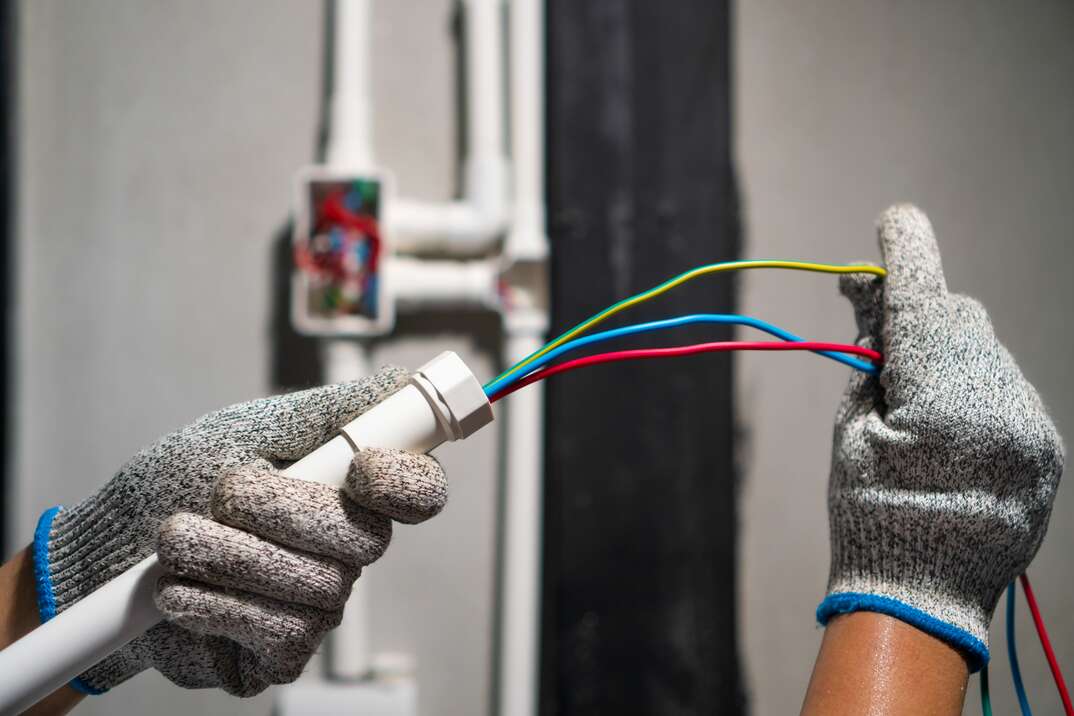- AppliancesElectriciansHVACLandscapingLocksmithPest ControlPlumbingRenovationRoofingT V RepairAll Home Improvement
- Car AccidentClass ActionCorporate LawCriminal DefenseDivorce LawEmployment LawFamily LawFinancial LawLegal AidMedical Injury LawyersMedical MalpracticeReal Estate LawWater Fire RestorationAll Legal
- InvestmentRetirementAll Finance
- Animal InsuranceAutoGeneral InsuranceHealth PolicyHome RentersAll Insurance
- DentalHealth SpecialistsAll Medical
- Animal CareVeterinaryAll Pets
- Auto GlassTowingAll Automotive
What Does 'Grounding' Mean?

When you sit in your living room on a hot summer day enjoying the cool air inside your home — possibly watching a movie on the TV and eating some popcorn you popped in the microwave — electricity is flowing all around you. You're using it to illuminate and cool your home, cook your food and entertain your family and for many other little tasks throughout the day.
With so much electrical current flowing through the home, how are more people not shocked by the current? The answer has to do with grounding.
Electrical grounding refers to the act of using wires and other elements to keep the flow of electricity connected to the earth. It's a safety precaution that ensures excess electricity doesn't escape its circuit and take an improper path to the ground — possibly through someone's body!
A Basic Guide to Home Electricity
Electrical engineering is a pretty complex subject, so it's impossible to cover it completely in a short article. However, the concept of electrical grounding is fairly straightforward.
You first have to understand that electricity flows into your home in both positive and negative flows. The negative electricity flows via what are called hot wires. These hot wires are always paired with neutral wires, or positive wires. This is where the positive electricity flows. It takes both to power the devices in your home.
In some cases, electricity "escapes" the planned flow along the electrical circuit created by wiring and appliances. It can do this for a variety of reasons, including:
- Too much current. When there's too much current in a circuit, it may not have anywhere to go. It can build up as a sort of backlog is created. The electricity that's building up looks for a way to escape that may not be the intended circuit.
- Damaged wiring. If wires aren't properly insulated or they cross with other wires, the electricity in them can take a path that isn't intended.
- Damaged appliances. The same is true if there are issues within an appliance.
- Improper connections or assembly. If a device is plugged in haphazardly or an appliance isn't properly installed, it can create an opening for the electrical current to escape the proper circuit.
When electricity flows outside of its intended and insulated circuit, it begins to seek a path to the ground. It might seek that path through metal and other surfaces in the home or even a person who happens to touch a surface where electricity is flowing. This can cause damage to the home, fire and serious injury to people or animals.
Home electrical systems include elements known as grounding wires to reduce the dangers associated with these issues.
- How Do I Tell If an Electrical Issue Is Serious?
- Can One Bad Outlet Affect Others?
- How to Reset a GFCI Outlet
- What’s in My Electrician’s Van?
- 7 Ways to Save on Your Electric Bill
What Are Grounding Wires, and What Do They Do?
Home electrical systems and outlets include grounding components. Grounding wires are wires that run alongside the negative and positive wires in home electrical circuits. If excess electricity is present or electricity escapes the circuit for any reason, the grounding wires provide easy access to the ground. This means that electricity is more likely to flow via the grounding wire as it seeks the earth than to take a random path through surfaces and people in the home.
As you can see, electrical grounding work is critical to safety in any home or building. If you suspect that the grounding wires in your home aren't up to par, it's a good idea to get an electrician to take a look. Some signs of poor grounding work include constant circuit breaker tripping, appliances or electrical components going bad quickly, lights popping and burning smells in your walls.
Elocal Editorial Content is for educational and entertainment purposes only. Editorial Content should not be used as a substitute for advice from a licensed professional in your state reviewing your issue. Systems, equipment, issues and circumstances vary. Follow the manufacturer's safety precautions. The opinions, beliefs and viewpoints expressed by the eLocal Editorial Team and other third-party content providers do not necessarily reflect the opinions, beliefs and viewpoints of eLocal or its affiliate companies. Use of the Blog is subject to the
Website Terms and Conditions.The eLocal Editorial Team operates independently of eLocal USA's marketing and sales decisions.

